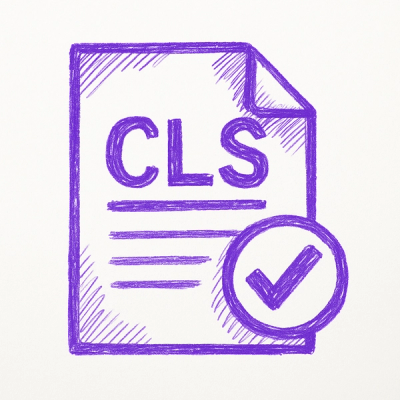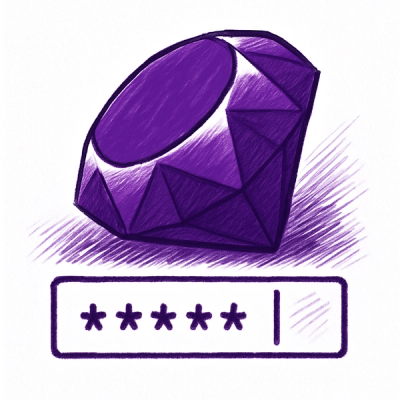
Security News
Opengrep Adds Apex Support and New Rule Controls in Latest Updates
The latest Opengrep releases add Apex scanning, precision rule tuning, and performance gains for open source static code analysis.
@dongivan/virtual-keyboard
Advanced tools
A virtual keyboard based on Vue 3.2 (and floating ui).
A virtual keyboard based on Vue 3.2 (and floating ui).
npm install @dongivan/virtual-keyboard --save
Just import and use it in your template.
<template>
<VirtualKeyboard class="..." @key-pressed="(key) => ...">
<div class="...">
<KeyButton v-for="i of 10" :key="`key-${i - 1}`" :value="i - 1" />
</div>
</VirtualKeyboard>
</template>
<script setup lang="ts">
import {
VirtualKeyboard,
KeyButton,
} from "@dongivan/virtual-keyboard"
</script>
You can use KeyboardPage if you have multiple pages of virtual keyboard (remember to use PageButton to change the current page).
<template>
<VirtualKeyboard class="..." @key-pressed="(key) => ...">
<KeyboardPage name="num" default>
<div class="...">
<KeyButton v-for="i of 10" :key="`key-${i - 1}`" :value="i - 1" />
</div>
</KeyboardPage>
<KeyboardPage name="eng" default>
<div class="...">
<KeyButton v-for="v of 'abcdefghijklmnopqrstuvwxyz'.split('')" :key="`key-${v}`" :value="v" />
</div>
</KeyboardPage>
<div class="...">
<PageButton value="num" :children="['eng']" />
</div>
</VirtualKeyboard>
</template>
<script setup lang="ts">
import {
VirtualKeyboard,
KeyButton,
KeyboardPage,
PageButton,
} from "@dongivan/virtual-keyboard"
</script>
ShiftButton will shift the current keyboard page (which means each key in current keyboard page will be shifted if it could).
<template>
<VirtualKeyboard class="..." @key-pressed="(key) => ...">
<div class="...">
<KeyButton v-for="v of 'abcdefghijklmnopqrstuvwxyz'.split('')" :key="`key-${v}`" :children="[v.toUpperCase()]" :value="v" />
</div>
<div class="...">
<ShiftButton />
</div>
</VirtualKeyboard>
</template>
<script setup lang="ts">
import {
VirtualKeyboard,
KeyButton,
ShiftButton,
} from "@dongivan/virtual-keyboard"
</script>
Use default css by import default.css:
import "@dongivan/virtual-keyboard/default.css";
Or, you can speicify your own styles by define css classes:
| Css Class Name | Component | Element | Description |
|---|---|---|---|
.vk-page | KeyboardPage | root element | |
.vk-btn | GenerateButton, KeyButton, PageButton, ShiftButton | root element | base class |
.vk-btn.default | the same as above | root element | default state |
.vk-btn.active | the same as above | root element | active state |
.vk-btn.hover | the same as above | root element | hover state |
.vk-btn.focus | the same as above | root element | focus state |
.vk-btn .vk-btn-badge | the same as above | badge element | base class |
.vk-btn .vk-btn-badge.hide | the same as above | badge element | hide badge |
.vk-btn .vk-btn-badge.triangle | the same as above | badge element | show triangle |
.vk-btn .vk-btn-badge.slot | the same as above | badge element | use slot |
.vk-btn .vk-btn-children | the same as above | children container element | container class |
.vk-btn .vk-btn-children .vk-btn | the same as above | root element of child button | base class |
.vk-btn .vk-btn-children .vk-btn.default | the same as above | child button | default state |
.vk-btn .vk-btn-children .vk-btn.active | the same as above | child button | active state |
.vk-btn .vk-btn-children .vk-btn.hover | the same as above | child button | hover state |
.vk-btn .vk-btn-children .vk-btn.focus | the same as above | child button | focus state |
Use :deep() while there is a scoped attribute in <style> tag:
<style scoped>
:deep() {
.vk-button {
width: 32px;
}
}
</style>
There are 5 main Vue componenets: VirtualKeyboard, KeyButton, KeyboardPage, PageButton and ShiftButton.
VirtualKeyboard acts as a root component so you have to put the other components in it. You should add key-pressed listener to it and other components will not emit any events(they use Vue project/inject to communicate with each other.).
KeyButton acts as a common button.
The other 3 components are all optional, you can use them in your case.
VirtualKeyboard| Event | payloads | Description |
|---|---|---|
| key-pressed | (key: string) | This event will be emitted a key (which is a child of the VirtualKeyboard ) is pressed |
VirtualKeyboard has only a default slot. You should put all the children components in it.
Just use class & style attribute.
KeyButton| Prop | Type | Default | Description |
|---|---|---|---|
| value | string | required | This value will be emitted in the key-pressed event of VirtualKeyboard. And it will be set as the label if the label is "" and the slot (#btn-${value}) is not set. |
| label | string | "" | The label of this key button. |
| children | (string|ButtonType)[] | [] | The children buttons of this key button. The label strategy is just like the KeyButton. |
| shiftIndex | number | 0 | When the VirtualKeyboard is shifted, the children[shiftIndex] will replace the current key button. |
| active | boolean | false | The .vk-btn .active class will be add to the button element if this prop is true. |
| badge | "auto"|"hide"|"triangle"|"slot" | "auto" | The badge is a symbol on the right-top of the KeyButton, and it will be visible if badge !== "hide" and the KeyButton has at least one child.- "triangle" will add .triangle to the badge of the key button; - "slot" will add .slot; - "auto" will add .slot if there are only one child, or add .triangle if there are more than one child; - "hide" will hide the badge. |
| css | GenericButtonCss | see below | The css classes used by the component |
| childrenOffset | { alignmentAxis: number; mainAxis: number; crossAxis: number; } | { alignmentAxis: 0, crossAxis: 0, mainAxis: 2 } | VirtualKeyboard uses Floating UI to show the children elements of a button, and the childrenOffset is used to set the position of the floating elements. Its value will send to the offset Middleware of Floating UI as the params. |
GenericButtonCss type:
type BadgeCss = {
base?: string;
hide?: string;
triangle?: string;
slot?: string;
};
type ButtonCss = {
base?: string;
default?: string;
active?: string;
hover?: string;
focus?: string;
};
type GenericButtonCss = ButtonCss & {
badge?: BadgeCss;
children?: ButtonCss & {
container?: string;
};
};
Prop css default value:
{
base: "vk-btn",
default: "default",
active: "active",
hover: "hover",
focus: "focus",
badge: {
base: "vk-btn-badge",
hide: "hide",
triangle: "triangle",
slot: "slot",
},
children: {
container: "vk-btn-children",
},
}
Use the default slot for the default value and the named slot (as btn-${child}) for the children if you want to show an icon or something else on the button or the child button.
For example:
<KeyButton value="u" :children="['ǖ', 'ǘ', { value: 'ǚ', label: 'letter ǚ'}, 'ǜ']" >
<template>letter u</template>
<template #btn-ǘ>letter ǘ</template>
<template #[`btn-ǜ`]>letter ǜ</template>
</KeyButton>
You can use class & style (includes :class & :style) on the KeyButton component, however it is difficult to set the children elements or different states, so I recommend you to define css classes as .vk-btn or use the prop css.
KeyboardPageYou should use this component when your virtual keyboard has multiple layouts (or pages). Each KeyboardPage has a prop named name, and it will be visible when the current page of its parent VirtualKeyboard equals to this prop (which means that you can have multiple KeyboardPage with the same name, and they will be all visible if the current page of VirtualKeyboard equals to it).
| Prop | Type | Default | Description |
|---|---|---|---|
| name | string | required | The name of this page. |
| default | boolean | false | Set it to true if the KeyboardPage should be visible as default page. |
| pageClass | string | "vk-page" | The HTML class of the KeyboardPage root element. |
KeyboardPage has only a default slot. You should put all the children components in it.
The same as the classes & styles of KeyButton components, and furthermore you can use the prop pageClass.
PageButtonVirtualKeyboard provides a changePage function (with the type ChangePageFunction) for its children components using provide/inject of Vue, and PageButton will call this function if it is pressed.
PageButton will automatically set the button to active when the current page of VirutalKeyboard equals to its name, and it will also show the correct label (or slot) of the current page.
The props of PageButton are almost the same as KeyButton, except PageButton does not have props active and shiftIndex.
The same as KeyButton.
The same as KeyButton.
ShiftButtonAs the same of PageButton, VirtualKeyboard provides a shiftKeyboard function (with the type ShiftKeyboardFunction)and ShiftButton will call this function if it is pressed.
| Prop | Type | Default | Description |
|---|---|---|---|
| label | string | "Shift" | The label of the shift button. |
ShiftButton has only a default slot which is scoped. It can be used to show icons or something else.
| Scoped Prop | Type | Description |
|---|---|---|
| isShifted | boolean | whether the VirtualKeyboard is shifted |
The same as KeyButton except ShiftButton does not have children buttons.
FAQs
A virtual keyboard based on Vue 3.2 (and floating ui).
The npm package @dongivan/virtual-keyboard receives a total of 2 weekly downloads. As such, @dongivan/virtual-keyboard popularity was classified as not popular.
We found that @dongivan/virtual-keyboard demonstrated a not healthy version release cadence and project activity because the last version was released a year ago. It has 1 open source maintainer collaborating on the project.
Did you know?

Socket for GitHub automatically highlights issues in each pull request and monitors the health of all your open source dependencies. Discover the contents of your packages and block harmful activity before you install or update your dependencies.

Security News
The latest Opengrep releases add Apex scanning, precision rule tuning, and performance gains for open source static code analysis.

Security News
npm now supports Trusted Publishing with OIDC, enabling secure package publishing directly from CI/CD workflows without relying on long-lived tokens.

Research
/Security News
A RubyGems malware campaign used 60 malicious packages posing as automation tools to steal credentials from social media and marketing tool users.